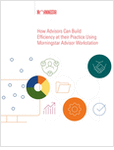Not every bully stands 6-foot-3 and weighs in at 319 pounds, as does former Miami Dolphins player Richie Incognito. They can be the petite woman in sales support, or the skinny dude back in IT. But if they decide to harass one of your key players, they might as well be throwing a cross-body block on staff morale.
The alleged hazing of Dolphins player Jonathan Martin cost the Dolphins two key players when Martin quit and Incognito was suspended for his bad behavior. The significance of the situation, bullying experts say, is that it was so egregious it came to light. Most times, these experts agree, bullying goes on unchallenged by management or even unnoticed. The cost of this unreported bullying can be high —although not as high as if someone quits and sues the company.
Related story: Bullied to death
How much workplace bullying occurs? One estimate by Zogby International says perhaps 35 percent of workers have experienced bullying at work at one time or another. The Society for Human Resource Management surveyed employers in 2012 and said that more than half reported an incident of bullying at work.
“The cost of employee bullying is substantial, as studies have shown that cowed workers tend to be less productive than their peers, and also account for high rates of absenteeism, turnover and more frequent schedule change requests, all of which add to an employer’s HR challenges and also hurt productivity,” attorney Michael J. Volpe, a partner in Venable’s New York office, and Venable associate Nicholas M. Reiter, wrote recently. “Additionally, employers often see their insurance premiums increase due to more workers’ compensation claims filed on behalf of the bullied employees.”
The pair said that legal claims filed against employers by victims of bullying generally cited harassment focusing on the victim’s race, disability, religion or sexual orientation.








 November 11, 2013 at 10:05 AM
November 11, 2013 at 10:05 AM










